Out of hundreds of thousands of trading books that you might want to take a look at, here are some that have stood the test of time that offer insightful, sometimes scientific views of the market that might benefit you to know. These are chosen because they share a variety of ways to view the market while also learning about yourself and what is going on with our thinking and decision making. In no particular order, here is the list!
Trading Psychology 2.0
This book provides practical strategies to help traders overcome common psychological pitfalls, manage stress, and enhance their decision-making abilities. Steenbarger combines his expertise in psychology with a deep understanding of financial markets.
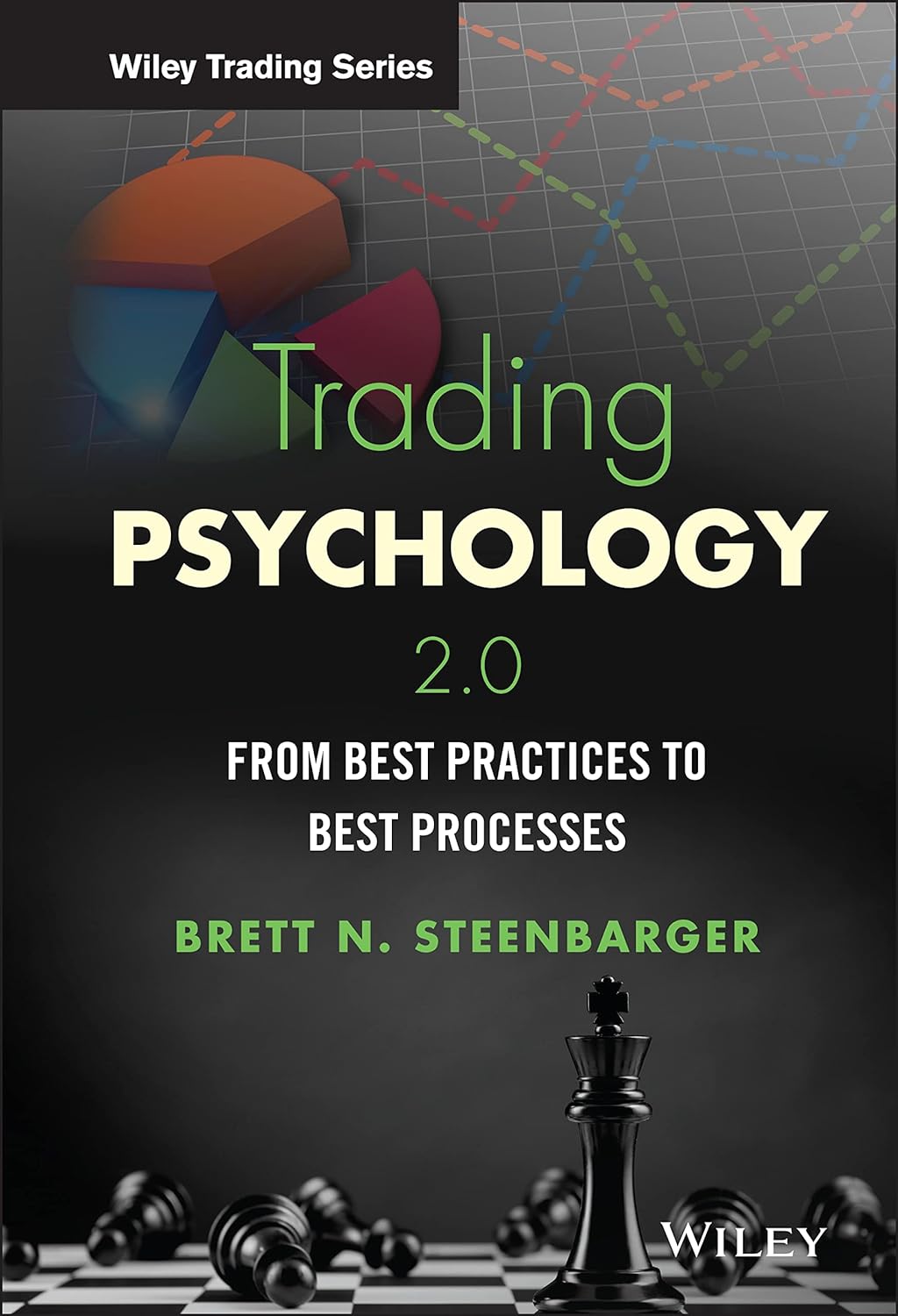 Key topics covered in "Trading Psychology 2.0" include:
Key topics covered in "Trading Psychology 2.0" include:
Self-Awareness: The book emphasizes the importance of self-awareness for traders. Understanding one's strengths, weaknesses, and psychological tendencies is crucial for making informed trading decisions.
Emotional Regulation: Steenbarger explores how emotions can impact trading and provides techniques for emotional regulation. Maintaining composure during market fluctuations is essential for consistent performance.
Goal Setting: Setting clear and realistic goals is discussed as a key component of successful trading. The book guides readers on how to establish meaningful objectives and maintain focus on long-term success.
Learning from Mistakes: Steenbarger encourages traders to view mistakes as opportunities for learning and improvement. The ability to analyze and learn from trading errors is crucial for continuous growth.
Performance Optimization: The book provides practical exercises and strategies to optimize trading performance. This includes techniques for building confidence, staying disciplined, and developing a positive trading routine.
Market Intuition: Steenbarger explores the concept of market intuition and how experienced traders develop a deep understanding of market dynamics over time. This intuition is seen as a valuable asset for making effective trading decisions.
"Trading Psychology 2.0" has been well-received for its combination of psychological principles and real-world trading insights. It's often recommended for traders looking to enhance their mental resilience and improve their overall performance in the financial markets.
Next is one of my personal favorites because it combines two topics that interest me which is neuroscience and trading.
Market Mind Games: Unraveling the Psychology of Trading: Author: Denise Shull
'Market Mind Games' by Denise Shull is a compelling exploration into the intricate relationship between the human mind and the volatile world of financial markets. Shull, a performance coach and neuroeconomist, offers readers a unique perspective on trading psychology, emphasizing the crucial role of emotions and mental processes in shaping investment decisions.
Unveiling the Psychological Landscape of Trading
At its core, 'Market Mind Games' is a journey into the psychological landscape of trading. Shull draws on her extensive experience working with traders and hedge fund managers, combining insights from neuroscience and psychology to dissect the intricate dance between emotion and market dynamics. The book acts as a guide for traders seeking a deeper understanding of the psychological challenges inherent in the financial markets.
Decoding Emotional Complexity
Shull tackles head-on the complex and often overwhelming emotions that traders grapple with on a daily basis. Fear, greed, and uncertainty are dissected, with Shull providing not only an analysis of these emotions but also practical strategies for managing and leveraging them to one's advantage. Through real-world examples and case studies, she demonstrates how emotional intelligence can be a powerful tool in navigating the unpredictable terrain of financial markets.
The Neuroscientific Lens
One of the book's standout features is its integration of neuroscience into the realm of trading. Shull elucidates how the brain functions under the pressures of market fluctuations, shedding light on the neurobiological processes that influence decision-making. By connecting the dots between brain science and trading, 'Market Mind Games' equips readers with a deeper comprehension of the mental mechanisms at play during trading sessions.
Practical Strategies for Improved Performance
In addition to theoretical insights, Shull provides actionable strategies to enhance trading performance. The book serves as a practical guide, offering tools and techniques for traders to apply in real-time. Whether it's managing stress, overcoming psychological biases, or cultivating resilience, Shull provides a comprehensive toolkit to help traders navigate the emotional rollercoaster of financial markets.
Real-World Examples and Case Studies
To illustrate her concepts, Shull incorporates a plethora of real-world examples and case studies. These stories, drawn from her experiences working with traders, bring the theories to life. By grounding the book in the tangible experiences of market participants, Shull ensures that her insights resonate with both novice and experienced traders alike.
Shifting Paradigms in Trading Psychology
'Market Mind Games' challenges conventional paradigms in trading psychology. Shull's holistic approach transcends the traditional emphasis on market analysis and technical strategies, positioning emotional intelligence and self-awareness as equally critical components of a trader's toolkit. This paradigm shift invites readers to reconsider their approach to trading, recognizing the symbiotic relationship between the mind and the market.
The Intersection of Psychology and Market Dynamics
As the title suggests, the book unveils the mind games that unfold in the market, highlighting how collective human psychology influences market dynamics. Shull explores the concept of market sentiment, demonstrating how understanding the emotional currents among market participants can provide a strategic advantage. Through this lens, 'Market Mind Games' offers readers a nuanced understanding of market trends beyond conventional analyses.
Critical Reception and Impact
Since its publication, 'Market Mind Games' has garnered attention for its innovative approach to trading psychology. Reviews applaud Shull's ability to demystify the complexities of the mind in the context of trading, making the book accessible to a broad audience. Traders, investors, and professionals in the finance industry have found value in Shull's insights, prompting a shift in the conversation around the importance of psychological resilience in the trading arena.
Overall, 'Market Mind Games' by Denise Shull offers a roadmap for traders to navigate the mind-driven markets successfully. By intertwining neuroscience, psychology, and practical strategies, Shull empowers readers to not only understand the intricacies of their own minds but also leverage this understanding for improved trading outcomes.
Next book about trading psychology is a classic.
"Come into My Trading Room" by Alexander Elder
Introduction:
"Come into My Trading Room" by Dr. Alexander Elder is a comprehensive guide to the world of trading, offering a holistic approach that combines technical analysis, psychology, and risk management. Dr. Elder, a professional trader, psychiatrist, and teacher, draws on his extensive experience to create a resource that caters to both novice and experienced traders.
Here are some of the key themes:
1. Trading as a Profession:
Dr. Elder emphasizes treating trading as a serious profession rather than a casual hobby. He explores the mindset required to approach trading with discipline, patience, and a commitment to continuous learning.
2. Technical Analysis:
The book delves into technical analysis, covering chart patterns, indicators, and other tools essential for analyzing market trends. Dr. Elder provides practical insights into how traders can use these tools effectively to make informed decisions.
3. Psychological Aspects:
Acknowledging the psychological challenges of trading, Dr. Elder addresses the emotional aspects of the trading journey. He explores the impact of fear and greed on decision-making and provides strategies for developing mental resilience.
4. Risk Management:
Risk management is a central theme in the book. Dr. Elder emphasizes the importance of preserving capital and outlines techniques for managing risk, setting stop-loss orders, and diversifying portfolios.
5. Trading Systems:
The author introduces the concept of trading systems and outlines how to develop and test them. He provides a systematic approach to building robust trading systems that can adapt to different market conditions.
Structure and Style:
The book is structured in a logical sequence, guiding the reader from foundational concepts to more advanced topics. Dr. Elder's writing style is accessible and engaging, making complex subjects comprehensible to a broad audience. The inclusion of real-life examples and case studies adds practical relevance to the theoretical discussions.
Practical Exercises and Tools:
One notable feature of "Come into My Trading Room" is the inclusion of practical exercises and checklists. Dr. Elder encourages readers to apply the concepts learned through hands-on activities, reinforcing the idea that successful trading is a skill that develops with practice.
Critique:
While the book covers a broad range of topics, some readers may find the depth of coverage in certain areas to be either too introductory or too advanced. Additionally, market conditions and trading technologies evolve, so readers are encouraged to supplement their learning with updated information from additional sources.
Overall, "Come into My Trading Room" stands out as a comprehensive and insightful guide to trading. Dr. Alexander Elder's holistic approach, combining technical analysis, psychology, and risk management, provides readers with a well-rounded understanding of the challenges and opportunities in the world of trading. Whether you are a beginner or an experienced trader, the book offers valuable lessons and practical tools to enhance your trading skills and decision-making processes.
Next is an author that has become almost synonymous with trading psychology.
"The Disciplined Trader" by Mark Douglas.
Published in 1990, this seminal work has become a cornerstone in the realm of trading psychology literature. In this comprehensive review summary, we'll explore the key themes, insights, and the enduring impact of Douglas's book.
Overview of "The Disciplined Trader" by Mark Douglas
1. Understanding the Psychology of Trading
At its core, "The Disciplined Trader" delves into the often-neglected realm of trading psychology. Mark Douglas recognizes that successful trading is not solely about technical analysis or market trends but is profoundly influenced by the mindset and emotions of the trader. Drawing on his extensive experience as a trading coach, Douglas guides readers through the intricacies of mastering one's mental state in the high-stakes arena of financial markets.
2. The Impact of Beliefs and Perception
One of the book's central tenets revolves around the impact of a trader's beliefs and perceptions on their decision-making process. Douglas argues that deeply ingrained beliefs about the market, oneself, and the nature of success can significantly shape trading outcomes. By dissecting and challenging these beliefs, the disciplined trader can overcome mental obstacles that often lead to irrational decision-making.
3. The Psychology of Winning and Losing
Douglas thoroughly examines the psychological dynamics of winning and losing in the context of trading. He contends that both winning and losing streaks can create emotional highs and lows, influencing subsequent trading decisions. The book provides practical strategies for maintaining emotional equilibrium in the face of success and failure, fostering a mindset of consistency and discipline.
4. Building a Trading Plan
"The Disciplined Trader" emphasizes the importance of a well-defined trading plan. Douglas outlines the key components of a robust plan, including entry and exit strategies, risk management, and contingency plans. Through numerous real-world examples, he illustrates how a structured approach to trading can mitigate emotional reactions and promote disciplined decision-making.
5. Overcoming Fear and Greed
Two of the most potent emotions in trading – fear and greed – are dissected in detail. Douglas explores how these emotions can lead to impulsive actions and irrational decision-making. By offering practical techniques for recognizing and managing fear and greed, he empowers traders to maintain a disciplined approach even in the face of market volatility.
6. Consistency as the Cornerstone of Success
Consistency emerges as a recurring theme throughout the book. Douglas argues that successful trading is not about avoiding losses altogether but about maintaining consistency in applying one's trading plan. By adhering to a set of well-defined rules and principles, traders can navigate the uncertainties of the market with a disciplined and focused mindset.
7. The Ongoing Journey of Self-Discovery
"The Disciplined Trader" is not merely a guide to mastering the psychological aspects of trading; it is an invitation to embark on a journey of self-discovery. Douglas encourages readers to continuously assess and refine their beliefs, trading strategies, and emotional responses. The book positions trading as a dynamic process of personal growth, where self-awareness is the key to sustained success.
Impact and Enduring Relevance
Mark Douglas's "The Disciplined Trader" has left an indelible mark on the trading community. Its enduring relevance lies in its holistic approach to trading, recognizing the inseparable link between the mind of the trader and the dynamics of the market. Traders and investors worldwide continue to turn to this book for insights into the psychological nuances of trading.
"The Disciplined Trader" goes beyond technical analysis and market trends, offering a timeless guide to mastering the psychological challenges inherent in trading. Mark Douglas's eloquent exploration of the human psyche and its intersection with financial markets provides readers with not only practical tools for success but also a profound understanding of the self in the context of trading.
In conclusion, "The Disciplined Trader" is a must-read for anyone seeking to elevate their trading game. Mark Douglas's blend of practical advice, psychological insights, and emphasis on discipline positions this book as a foundational resource in the ever-evolving landscape of trading literature. Whether you're a novice trader or a seasoned investor, the wisdom imparted in these pages transcends market trends, offering a timeless guide to becoming a disciplined and successful trader. And if you liked this book, you'll enjoy his second book called which you can read my review of the Inner Game of Trading.
"The Daily Trading Coach" by Dr. Brett N. Steenbarger.
The Daily Trading Coach serves as a comprehensive guide for traders, providing valuable insights into the psychological aspects of trading and offering practical exercises to enhance trading skills.
Authored by Dr. Brett N. Steenbarger, a renowned clinical psychologist and trading coach, the book is structured as a daily guide, making it a unique and interactive resource for traders at all levels.
Unveiling the Trading Mindset
At the core of the book is the exploration of the psychological dimensions of trading. Dr. Steenbarger delves into the intricacies of developing a disciplined and resilient mindset, emphasizing the importance of self-awareness and continuous improvement. The book transcends traditional trading literature by not only focusing on technical analysis and strategies but by placing a strong emphasis on the mental aspects that often define successful traders.
Daily Exercises for Continuous Improvement
One of the distinctive features of The Daily Trading Coach is its day-by-day format, providing readers with a year's worth of daily exercises and reflections. This unique structure makes the book a practical tool for traders looking to incorporate daily habits that contribute to their personal and professional development.
Each daily entry covers a specific aspect of trading psychology, goal setting, risk management, and performance enhancement. Dr. Steenbarger's approach combines his expertise in psychology with practical trading wisdom, making the book a comprehensive guide for those who understand that successful trading is not merely about charts and numbers but also about mastering the mental game.
Key Themes Explored in the Book
1. Psychological Resilience:
Dr. Steenbarger addresses the emotional challenges traders face during market fluctuations. The book provides strategies for developing resilience, maintaining composure during stressful situations, and learning from both successes and failures.
2. Goal Setting and Review:
Traders often struggle with setting and achieving meaningful goals. The Daily Trading Coach guides readers through the process of effective goal setting and encourages regular self-assessment to ensure continuous progress.
3. Mindfulness and Awareness:
Mindfulness is a recurring theme in the book, emphasizing the importance of being present in the trading moment. Dr. Steenbarger introduces mindfulness exercises and reflective practices to enhance traders' awareness of their thoughts and behaviors.
4. Continuous Learning:
The book emphasizes the need for ongoing learning and adaptation. Daily insights cover various aspects of market analysis, trading strategies, and the importance of staying informed about market trends.
Real-World Application and Case Studies
To enhance the practicality of the book, Dr. Steenbarger incorporates real-world examples and case studies. By drawing on his extensive experience working with traders, he provides relatable scenarios that illustrate the application of psychological principles in actual trading situations. This bridge between theory and practice makes the content accessible and actionable for readers seeking tangible results in their trading endeavors.
Critique and Considerations
While the day-by-day format offers a structured approach to learning, some readers may find it challenging to adhere strictly to this format. The commitment to a daily routine might be demanding for those with hectic schedules. However, the flexibility to adapt the book to a personalized learning pace can mitigate this concern.
Conclusion: A Comprehensive Guide to Trading Psychology
The Daily Trading Coach by Dr. Brett N. Steenbarger stands out as a valuable resource in the realm of trading psychology. Its unique daily format, rich with insights and practical exercises, sets it apart from conventional trading literature. Whether you are a novice trader looking to build a solid foundation or an experienced professional aiming to refine your skills, this book provides an overall approach to trading success by nurturing the trader's mindset. Dr. Steenbarger's blend of psychological expertise and real-world application makes this book an indispensable companion for those seeking to master the art and science of trading.
Next is a book about how we can make bad decisions.
"Sway: The Irresistible Pull of Irrational Behavior" by Ori Brafman and Rom Brafman.
Published in 2008, the book explores the psychological and social forces that drive humans to make irrational decisions.
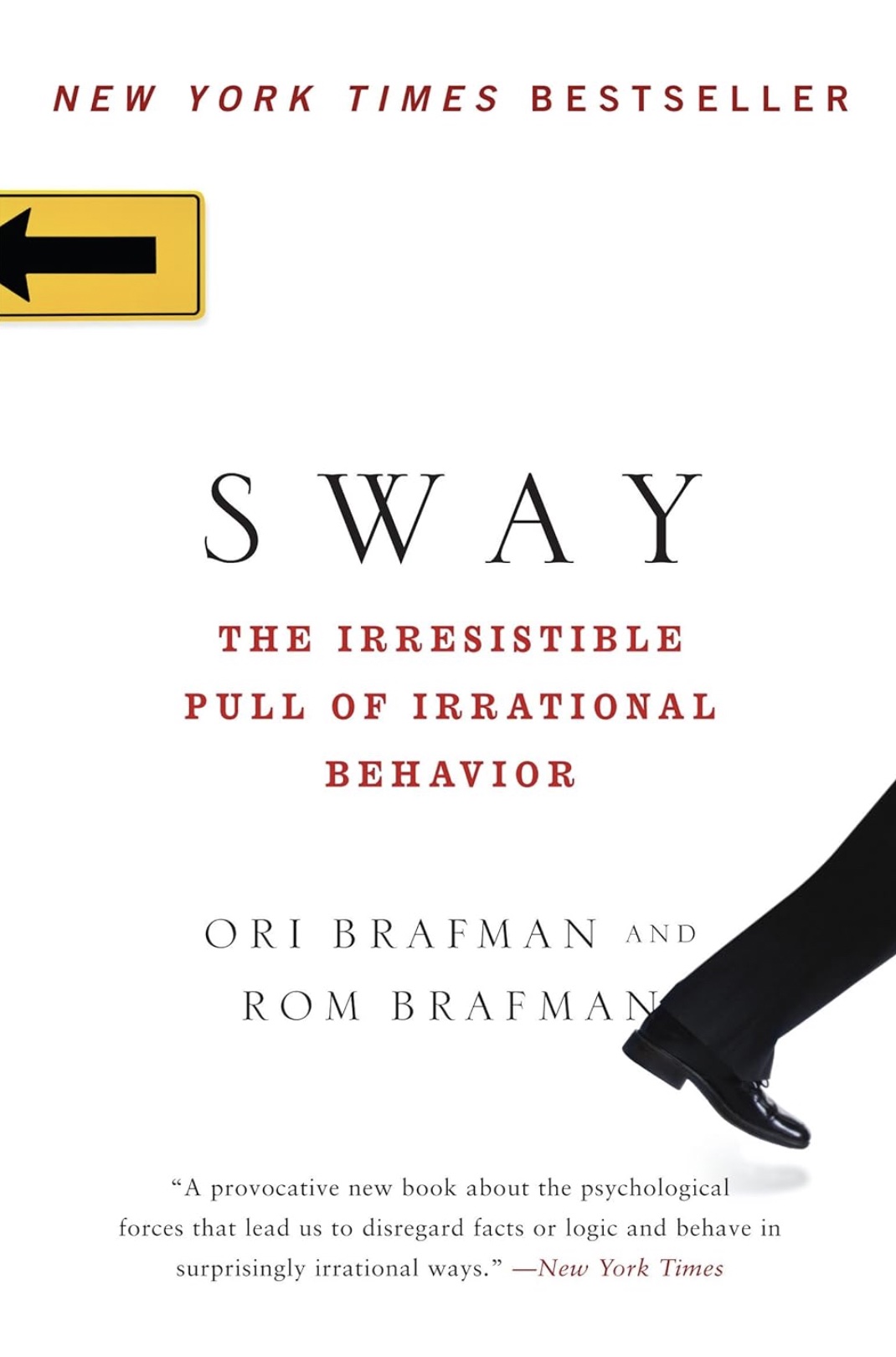 Unraveling the Web of Irrationality
Unraveling the Web of Irrationality
"Sway" delves into the often perplexing realm of irrational behavior, unraveling the intricacies of human decision-making. Ori and Rom Brafman take readers on a journey through various case studies, psychological experiments, and real-world examples to shed light on the forces that sway our choices, often against logic and reason.
The Subtle Influences That Shape Decisions
The authors explore the subtle and powerful influences that shape our decisions, steering us away from rationality. Drawing on insights from behavioral economics, psychology, and sociology, the book uncovers the hidden biases and cognitive errors that lead individuals, and even groups, to make choices that defy conventional wisdom.
Case Studies and Compelling Narratives
"Sway" captivates readers with a series of compelling case studies, ranging from corporate decision-making to personal choices. Through stories of business failures, medical misjudgments, and historical events, the Brafman brothers illustrate how the human mind can be swayed by various factors, such as loss aversion, commitment bias, and the influence of authority figures.
The Power of Social Dynamics
A significant portion of the book explores the impact of social dynamics on decision-making and the concept of groupthink, where individuals within a group prioritize harmony and conformity over critical thinking. By examining events like the Bay of Pigs invasion and the Challenger disaster, "Sway" highlights how group influences can lead to catastrophic outcomes.
Loss Aversion and Escalation of Commitment
"Sway" introduces readers to the concept of loss aversion, where individuals are more influenced by the fear of losing than the potential for gain. The book also delves into the psychology of escalation of commitment, exploring why people tend to persist with failing courses of action. By examining these phenomena, the authors provide valuable insights into decision-making pitfalls that individuals and organizations commonly face.
Practical Implications and Reflection
While the book outlines various irrational behaviors, it doesn't merely leave readers in the realm of psychological observation. "Sway" offers practical implications and suggestions for navigating the subtle biases that affect decision-making. It encourages readers to reflect on their own tendencies and provides tools for mitigating the sway of irrational influences.
Writing Style and Accessibility
The Brafman brothers adopt a writing style that makes complex psychological concepts accessible to a broad audience. The use of engaging anecdotes and real-world examples ensures that the book remains both informative and entertaining. The authors strike a balance between academic insights and readability, making "Sway" suitable for readers with varying levels of familiarity with behavioral science.
Limitations and Criticisms
While "Sway" provides valuable insights, some critics argue that the book simplifies complex psychological concepts, potentially oversimplifying the reasons behind irrational behavior. Additionally, the case-study-heavy approach may not appeal to readers seeking a more structured theoretical exploration.
Conclusion
In "Sway: The Irresistible Pull of Irrational Behavior," Ori and Rom Brafman skillfully navigate the intricate landscape of human decision-making. Through a blend of captivating narratives and psychological research, the book sheds light on the forces that lead individuals astray from rationality. Whether you're a psychology enthusiast, a business professional, or simply curious about the mysteries of the human mind, "Sway" offers a compelling exploration of the irresistible pull of irrational behavior. The book serves as a valuable guide for understanding the complexities of decision-making and provides practical insights for navigating the sways that impact our choices.
Pit Bull: Lessons from Wall Street's Champion Day Trader
Welcome to the world of Martin "Buzzy" Schwartz, Champion Trader--the man whose nerves of steel and killer instinct in the canyons of Wall Street earned him the well-deserved name "Pit Bull." This is the true story of how Schwartz became the best of the best, of the people and places he discovered along the way and of the trader’s tricks and techniques he used to make his millions.
"Pit Bull: Lessons from Wall Street's Champion Day Trader" is a captivating autobiography written by Martin Schwartz, a legendary figure in the world of trading. Published in 1999, the book provides a unique and personal perspective on Schwartz's journey from a humble beginnings to becoming one of the most successful day traders on Wall Street. This review aims to explore the key themes, lessons, and insights offered by Schwartz in his memoir.
I. A Glimpse into Martin Schwartz's Background:
"Pit Bull" opens with a glimpse into Schwartz's early life, growing up in a middle-class family and navigating the challenges of adolescence. This part of the book sets the stage for understanding the motivations that led Schwartz to pursue a career in trading. His initial foray into the financial markets was marked by curiosity and a relentless desire to succeed.
Schwartz's narrative is candid and relatable, making it easy for readers to connect with the author on a personal level. The struggles he faced during his early years, including financial setbacks and self-doubt, serve as a foundation for the lessons he later imparts on trading and life.
II. The Journey to Wall Street:
The book chronicles Schwartz's journey from an ordinary job to the fast-paced and competitive world of Wall Street. Readers gain insight into the challenges and triumphs he experienced while navigating the intricate web of financial markets. Schwartz's storytelling is both engaging and educational, offering a behind-the-scenes look at the dynamics of trading floors and the personalities that populate them.
The author's ability to convey the intensity of the trading environment adds a layer of authenticity to the narrative. Schwartz doesn't shy away from detailing the emotional rollercoaster that is part and parcel of the trading profession, providing readers with a realistic portrayal of the highs and lows he encountered.
III. Lessons from the Pit:
Central to the book are the valuable lessons Schwartz learned during his years as a day trader. He emphasizes the importance of discipline, risk management, and the psychological aspects of trading. These lessons are not merely theoretical but are drawn from the author's own experiences, making them practical and applicable for both novice and seasoned traders.
One of the key takeaways from "Pit Bull" is the significance of having a well-defined trading strategy. Schwartz discusses how he honed his skills and developed a set of rules to guide his decision-making process. The book serves as a blueprint for aspiring traders, offering insights into the mindset and methodologies that can contribute to success in the volatile world of financial markets.
IV. The Psychology of Trading:
Schwartz delves deep into the psychological aspects of trading, shedding light on the emotions that can either propel a trader to success or lead to their downfall. The author's candid discussions about fear, greed, and the importance of maintaining a clear head in the midst of market chaos provide readers with a roadmap for navigating the psychological challenges inherent in trading.
The anecdotes shared by Schwartz, including both wins and losses, serve as cautionary tales and sources of inspiration. Readers can glean valuable insights into how to manage stress, maintain focus, and cultivate the mental resilience required for sustained success in the trading arena.
V. Risk Management and Adaptability:
"Pit Bull" underscores the critical role of risk management in trading. Schwartz emphasizes the need for traders to protect their capital and avoid excessive risks that could wipe out their accounts. The book provides practical advice on determining position sizes, setting stop-loss orders, and managing leverage.
Additionally, Schwartz highlights the importance of adaptability in the ever-changing landscape of financial markets. He recounts instances where he had to pivot and adjust his strategies based on evolving market conditions. This flexibility, coupled with a keen awareness of risk, contributed significantly to Schwartz's ability to weather market storms and emerge stronger.
VI. Market Wisdom and Technical Analysis:
As a seasoned trader, Schwartz shares his insights into market dynamics and the role of technical analysis in making informed trading decisions. The book provides an accessible introduction to various technical indicators and chart patterns, with real-world examples illustrating their application.
Schwartz's emphasis on the importance of understanding market trends and using technical analysis as a tool for decision-making aligns with his overall message of approaching trading with a systematic and disciplined mindset. Readers looking to enhance their technical analysis skills will find "Pit Bull" to be a valuable resource.
VII. Reflections on Success and Failure:
Throughout the book, Schwartz reflects on both his successes and failures, offering a balanced perspective on the unpredictable nature of trading. His humility and willingness to share not only the victories but also the mistakes make "Pit Bull" a genuine and authentic account of a trader's journey.
Readers are reminded that losses are an inevitable part of trading and should be viewed as learning experiences rather than insurmountable setbacks. Schwartz's ability to bounce back from setbacks and use failure as a stepping stone to success serves as an inspirational narrative for anyone navigating the challenges of the financial markets.
VIII. Critique and Controversies:
While "Pit Bull" is widely praised for its insights and engaging narrative, it is not without its critics. Some argue that Schwartz's success story may not be easily replicable, given the unique circumstances and market conditions of his time. Additionally, the book has been criticized for its limited coverage of the evolving landscape of electronic trading, which has become more prominent since the book's publication.
Furthermore, some readers may find Schwartz's writing style to be more focused on storytelling than on providing a step-by-step guide for practical application. While the book is rich in anecdotes and life lessons, those seeking a more systematic and structured approach to trading may need to supplement their reading with additional resources.
Overall, "Pit Bull: Lessons from Wall Street's Champion Day Trader" is a captivating and insightful journey into the world of trading, providing readers with a firsthand account of the highs and lows of a successful career. Martin Schwartz's storytelling prowess, coupled with his candid reflections on the psychological and practical aspects of trading, makes this book a valuable resource for both aspiring and experienced traders.
The lessons imparted by Schwartz are timeless and extend beyond the realm of finance, offering readers a roadmap for personal and professional growth. While the book may not provide a comprehensive guide to modern electronic trading, its principles of discipline, risk management, and adaptability remain relevant and applicable in the ever-changing landscape of financial markets. "Pit Bull" stands as a testament to the enduring wisdom of a Wall Street legend, inviting readers to learn from the experiences of a true pit bull in the trading arena.
Market Wizards: Unveiling the Secrets of Success by Jack Schwager
"Market Wizards" by Jack Schwager is a timeless masterpiece that delves into the minds and strategies of some of the most successful traders of our time. First published in 1989, this classic has stood the test of time and continues to be a must-read for anyone aspiring to understand the intricacies of financial markets and the mindset of successful traders. In this comprehensive review, we will explore the key themes, lessons, and insights offered by Schwager as he presents the stories of these market wizards.
The Structure of Wisdom:
Schwager adopts a unique and effective structure in "Market Wizards." The book is essentially a compilation of interviews with some of the most accomplished traders across various financial markets. This structure not only provides a diverse range of perspectives but also allows readers to gain insights from traders with different trading styles, philosophies, and backgrounds.
The author divides the book into four main parts, each focusing on a specific aspect of trading:
1. Market Wizards: Interviews with Top Traders:** This section comprises interviews with legendary traders such as Paul Tudor Jones, Marty Schwartz, and Ed Seykota. Schwager skillfully extracts the principles, strategies, and philosophies that have contributed to their success.
2. The New Market Wizards: In this sequel, Schwager introduces a new set of traders, including Bruce Kovner, Stanley Druckenmiller, and Richard Dennis. This section builds on the foundation laid in the first part, reinforcing the idea that successful trading is not limited to a particular style or method.
3. Stock Market Wizards: Focused specifically on equity markets, this part features interviews with traders like William O'Neil and Mark Minervini. By narrowing the focus to stock trading, Schwager provides deeper insights into the nuances of this particular market.
4. Hedge Fund Market Wizards: The final section explores the strategies employed by hedge fund managers, including Ray Dalio and Joel Greenblatt. This section broadens the scope to encompass the hedge fund industry, shedding light on the unique challenges and opportunities faced by these professionals.
Key Themes and Lessons:
1. Diverse Strategies, Common Principles: One of the most significant takeaways from "Market Wizards" is the diversity of trading strategies employed by the interviewed wizards. From trend following and technical analysis to fundamental analysis and quantitative models, each trader has a unique approach. However, amidst this diversity, common principles emerge. Risk management, discipline, and the importance of psychology are recurring themes that underscore the foundation of successful trading.
2. The Psychology of Trading: Schwager dedicates considerable attention to the psychological aspects of trading. Traders like Mark Weinstein and Van Tharp emphasize the critical role of discipline, emotional control, and self-awareness. The book effectively communicates that mastering the mental game is just as crucial as developing a sound trading strategy.
3. Risk Management as the Bedrock: Every successful trader featured in the book emphasizes the paramount importance of risk management. Whether it's the famous turtle traders or Paul Tudor Jones, they all share a commitment to preserving capital. This aspect is particularly relevant for novice traders who may be enticed by the allure of high returns without fully appreciating the risks involved.
4. Adaptability and Continuous Learning: The market is dynamic, and successful traders are those who adapt to changing conditions. The wizards in Schwager's interviews stress the importance of continuous learning and evolution. Strategies that were profitable in one market environment may not work in another. Traders need to be flexible and willing to refine or change their approaches as market conditions evolve.
5. Insights into Market Dynamics: Through the experiences and stories of the wizards, the book provides valuable insights into market dynamics. Traders share their observations on market trends, volatility, and the interplay of various factors influencing price movements. This practical wisdom contributes to a deeper understanding of how markets function.
6. The Importance of Discipline: Discipline is a common thread woven throughout the interviews. Successful traders consistently follow their rules and stick to their strategies, even in the face of adversity. Schwager effectively communicates that success in trading is not about making impulsive decisions but about adhering to a disciplined and well-thought-out approach.
Conclusion:
"Market Wizards" by Jack Schwager stands as a timeless guide to the world of trading. Its enduring popularity is a testament to the valuable lessons it imparts and the genuine insights it provides into the minds of successful traders. By presenting a diverse range of strategies and philosophies, Schwager ensures that the book remains relevant to traders of various backgrounds and preferences.
The interviews go beyond mere technical analysis and trading strategies; they delve into the mindset, discipline, and risk management principles that set the wizards apart from the crowd. Whether you are a novice trader seeking foundational knowledge or an experienced professional looking for new perspectives, "Market Wizards" offers a rich tapestry of wisdom that transcends the ever-changing landscape of financial markets.
It's also interesting to see where they are now. And they're more successful than ever and are frequently working and being interviewed on financial matters. It's on this list because it provides insight into the different thinking of successful traders and it also stands the test of time because the experts being interviewed have shown the same resilience and duration. Jack Schwager's masterpiece continues to inspire and educate, making it a timeless companion for anyone navigating the complex and dynamic world of trading.
"New Trader, Rich Trader" by Steve Burns & Holly Burns
Published as a collaborative effort, the book not only serves as a practical guide for novice traders but also unveils the mindset and strategies that set successful traders apart from the rest.
The Power of Perspective: One of the book's defining strengths lies in its unique perspective. Authored by Steve Burns, a seasoned trader, and his daughter Holly Burns, a new trader, the book artfully combines the wisdom of experience with the fresh outlook of a beginner. This dual perspective creates a dynamic narrative that resonates with both those starting their trading journey and those seeking to refine their existing skills.
The book unfolds as a dialogue between the father-daughter duo, a format that breathes life into the content. Steve Burns' wealth of experience is evident as he imparts invaluable lessons, while Holly Burns injects a sense of relatability by posing questions and concerns that mirror those of many novice traders. This interplay of seasoned guidance and genuine curiosity establishes a connection with readers, making the learning process engaging and accessible.
Key Concepts Explored:
"New Trader, Rich Trader" share their fundamental concepts that form the bedrock of successful trading. The authors meticulously cover topics ranging from risk management and technical analysis to the psychological aspects of trading. Each chapter unfolds like a strategic layer, building a comprehensive understanding of what it takes to thrive in the volatile world of financial markets.
1. Risk Management:
The emphasis on risk management is a recurring theme throughout the book. Steve Burns underscores the importance of preserving capital as the foremost priority for traders. The authors skillfully explain various risk management techniques, providing practical examples and scenarios. Novice traders, in particular, stand to gain immensely from this section, as it lays the groundwork for sustainable and resilient trading practices.
2. Technical Analysis:
"New Trader, Rich Trader" devotes a substantial portion to technical analysis, demystifying chart patterns, indicators, and trend analysis. What sets this book apart is its ability to convey complex technical concepts in a straightforward manner. The inclusion of real-world examples and case studies adds a practical dimension, aiding readers in applying these techniques to their own trading endeavors.
3. Psychology of Trading:
Trading is as much about psychology as it is about charts and numbers. It's also the psychological nuances that often determine success or failure in the markets. Steve Burns draws on his own experiences to shed light on common pitfalls and the mindset required for consistent profitability. Holly's inquiries provide a fresh perspective, capturing the emotional rollercoaster that many new traders encounter.
4. Strategy Development
A notable aspect of "New Trader, Rich Trader" is its approach to strategy development. The authors emphasize the importance of having a well-defined trading plan and the discipline to stick to it. They guide readers through the process of creating a personalized strategy, taking into account individual risk tolerance, time constraints, and market conditions.
Practical Application:
What sets this book apart is its unwavering commitment to bridging the gap between theory and practice. Each concept is accompanied by actionable steps, ensuring that readers not only grasp the theoretical underpinnings but also learn how to implement them in real-world trading situations. The authors provide practical exercises, checklists, and templates that empower readers to translate knowledge into action.
The inclusion of case studies further enriches the learning experience. By dissecting both successful and unsuccessful trades, the book provides a nuanced understanding of the decision-making process. This hands-on approach is invaluable for new traders who often grapple with how to apply theoretical knowledge in the unpredictable dynamics of the market.
Challenges and Criticisms:
While "New Trader, Rich Trader" excels in many aspects, it is not without its criticisms. Some readers may find the conversational style between Steve and Holly Burns to be a bit contrived or forced at times. The attempt to create a dialogue, while effective in conveying different perspectives, may feel scripted in certain instances. Additionally, the book leans heavily towards the stock market, with limited exploration of other financial instruments such as forex or commodities. A more inclusive approach could have broadened its appeal to a wider audience.
The book's focus on technical analysis might also be a point of contention for traders who subscribe to different schools of thought. While technical analysis is undoubtedly a crucial aspect of trading, some may argue that a more balanced approach that incorporates fundamental analysis could offer a more comprehensive view of the markets.
Overall, "New Trader, Rich Trader" stands as a commendable addition to the plethora of trading literature available today. Its unique blend of experience and fresh perspective, coupled with a practical and hands-on approach, sets it apart in a crowded field. Whether you're a novice trader looking to build a solid foundation or an experienced trader seeking to refine your skills, the book offers valuable insights and actionable strategies.
The authors' commitment to demystifying the complexities of trading, coupled with their emphasis on risk management and psychological resilience, makes this book a valuable resource for anyone aspiring to navigate the financial markets successfully. While it may not be the definitive guide for every trader, the principles outlined in "New Trader, Rich Trader" serve as a robust framework for building a resilient and profitable trading career.
"12 Habitudes of Highly Successful Traders" by Ruth Barrons Roosevelt
The financial markets demand a unique set of skills, mindset, and discipline. Ruth Barrons Roosevelt, in her book "12 Habitudes of Highly Successful Traders," writes about her core principles that differentiate prosperous traders from the rest.
Here are the takeaways of Roosevelt's work, exploring each habitude and its implications for traders seeking enduring success.
1. Discipline: The Keystone of Trading Success (Chapter 1)
Roosevelt opens her book by emphasizing the pivotal role of discipline in trading. Drawing parallels between trading and other high-performance fields, she argues that successful traders possess an unwavering commitment to their strategies. Roosevelt contends that discipline is not merely following a set of rules but developing a mindset that ensures consistency in decision-making.
The author's insights resonate with traders across experience levels. By exploring the psychological aspects of discipline, Roosevelt provides a roadmap for developing this essential habitude. Readers are encouraged to reflect on their trading practices, identify areas of improvement, and cultivate the discipline necessary to navigate the unpredictable nature of financial markets.
2. Patience: Navigating the Ebb and Flow (Chapter 2)
In the second chapter, Roosevelt describes the importance of patience in trading. She argues that successful traders understand the cyclical nature of markets and exercise patience in waiting for optimal opportunities. Through real-life examples and case studies, she illustrates how impatience can lead to poor decision-making and financial losses.
Roosevelt's approach to patience extends beyond the waiting game. She explores the concept of patient perseverance in the face of adversity, emphasizing the importance of resilience in the trading journey. Traders are encouraged to embrace patience as a strategic virtue, allowing them to weather storms and capitalize on favorable market conditions.
3. Adaptability: Thriving in Changing Landscapes (Chapter 3)
The financial markets are dynamic, and adaptability is a trait that Roosevelt deems indispensable for success. In this chapter, she explores how successful traders navigate changing market conditions, adapt their strategies, and remain resilient in the face of uncertainty.
By drawing parallels between successful traders and adaptable organisms in nature, Roosevelt encourages readers to embrace change as an inherent part of the trading landscape. The chapter serves as a guide for traders to assess their adaptability, refine their strategies, and stay ahead in an ever-evolving market environment.
4. Risk Management: Safeguarding Your Capital (Chapter 4)
Roosevelt teaches the critical aspect of risk management in Chapter 4. She argues that successful traders prioritize the protection of their capital above all else. The chapter provides a comprehensive framework for assessing risk, setting stop-loss orders, and establishing position sizes.
Through case studies and practical examples, Roosevelt illustrates the consequences of neglecting risk management. Traders are urged to adopt a disciplined approach to risk, acknowledging its inevitability while implementing strategies to mitigate its impact. This chapter serves as a valuable resource for both novice and experienced traders seeking to fortify their risk management practices.
5. Continuous Learning: The Path to Mastery (Chapter 5)
Roosevelt underscores the importance of perpetual learning in the journey of a trader in Chapter 5. She argues that successful traders are committed to ongoing education, staying abreast of market trends, and refining their strategies based on new information.
This chapter serves as a guide for traders to cultivate a mindset of curiosity and intellectual humility. By embracing a commitment to learning, traders can adapt to evolving market dynamics and enhance their decision-making processes. Roosevelt's emphasis on continuous learning aligns with the ever-changing nature of financial markets, positioning readers to thrive in an information-driven landscape.
6. Self-Reflection: A Mirror to Trading Success (Chapter 6)
In the sixth chapter, Roosevelt explores the habit of self-reflection as a tool for personal and professional development. Successful traders, she argues, regularly assess their performance, identify areas for improvement, and adjust their strategies accordingly.
The author provides practical exercises and reflective prompts for readers to engage in self-analysis. By encouraging a habit of introspection, Roosevelt aims to help traders overcome psychological barriers, learn from mistakes, and refine their approaches. This chapter serves as a valuable resource for cultivating a growth mindset and fostering resilience in the face of challenges.
7. Goal Setting: Charting the Course to Success (Chapter 7)
Goal setting is a central theme in Chapter 7, where Roosevelt emphasizes its role in providing direction and purpose for traders. Successful traders, she contends, set clear, achievable goals that serve as beacons in the tumultuous sea of financial markets.
Through a structured approach to goal setting, readers are guided to define their objectives, break them down into actionable steps, and monitor progress. Roosevelt's insights on goal setting align with the principles of effective planning and execution, offering traders a roadmap to navigate their trading journeys with clarity and purpose.
8. Emotional Intelligence: Mastering the Inner Game (Chapter 8)
In the eighth chapter, Roosevelt explores the concept of emotional intelligence and its profound impact on trading success. Successful traders, she argues, possess a high degree of self-awareness, self-regulation, and empathy, enabling them to navigate the emotional rollercoaster of trading.
Through practical strategies and exercises, the author guides readers in developing emotional intelligence. By acknowledging and managing emotions, traders can make more rational decisions, avoid impulsive actions, and maintain a healthy mindset. This chapter serves as a crucial resource for traders seeking to master the psychological aspects of trading.
9. Adherence to a Trading Plan: A Blueprint for Success (Chapter 9)
Roosevelt dedicates Chapter 9 to the significance of adhering to a well-defined trading plan. Successful traders, she argues, meticulously craft and follow a plan that aligns with their goals, risk tolerance, and market conditions.
The chapter provides a comprehensive framework for developing a trading plan, including key components such as strategy, risk management rules, and performance metrics. Through real-world examples, Roosevelt illustrates the consequences of deviating from a plan and emphasizes the discipline required for its consistent implementation. Traders are encouraged to view a trading plan not as a rigid constraint but as a dynamic tool that evolves with market conditions.
10. Time Management: Maximizing Efficiency (Chapter 10)
Efficient use of time is a crucial aspect of trading success, according to Roosevelt in Chapter 10. Successful traders prioritize tasks, manage distractions, and allocate time effectively to research, analysis, and execution.
The author provides practical tips for time management, including the importance of setting priorities, avoiding multitasking, and maintaining a healthy work-life balance. Traders are guided to assess their time management habits and make adjustments to enhance productivity. This chapter serves as a valuable resource for traders seeking to optimize their time utilization in the competitive world of financial markets.
11. Resilience: Bouncing Back from Setbacks (Chapter 11)
In Chapter 11, Roosevelt explores the habit of resilience and its critical role in the face of inevitable setbacks. Successful traders, she argues, view failures as learning opportunities, bounce back from losses, and maintain a positive mindset.
Through real-life stories of resilience in the trading world, the author inspires readers to cultivate mental toughness. Practical exercises and strategies are provided to help traders develop resilience, cope with stress, and persevere in the face of adversity. Roosevelt's insights on resilience not only resonate with traders navigating the challenges of the financial markets but also offer a broader perspective on approaching setbacks in life with a growth mindset.
12. Network Building: Leveraging the Power of Connections (Chapter 12)
In the final chapter, Roosevelt underscores the importance of building a strong network in the trading community. Successful traders, she contends, recognize the value of collaboration, information sharing, and learning from others in the field.
The author provides practical strategies for networking, both online and offline, emphasizing the role of mentorship and community engagement. By fostering meaningful connections, traders can access valuable insights, gain diverse perspectives, and navigate the complexities of the financial markets more effectively. This chapter serves as a reminder that success in trading is not an isolated journey but a collaborative effort within a community of like-minded individuals.
Overall, "12 Habitudes of Highly Successful Traders" by Ruth Barrons Roosevelt is useful for traders at all levels of expertise. Roosevelt's approach goes beyond technical analysis and trading strategies by going over the foundational habits and mindset that underpin success in the dynamic world of financial markets.
The strength of Roosevelt's book lies in its practicality. Each habitude is explored with a blend of theoretical insights, real-world examples, and actionable strategies. The inclusion of exercises and reflective prompts throughout the book encourages readers to actively engage with the material, facilitating a deeper understanding of their own trading habits and areas for improvement.
One of the notable aspects of the book is its holistic approach to trading success. While technical skills are undoubtedly crucial, Roosevelt emphasizes the equally vital role of psychological resilience, emotional intelligence, and continuous learning. By addressing the multifaceted nature of trading, the author provides readers with a well-rounded toolkit to navigate the challenges and uncertainties inherent in financial markets.
Moreover, the book is accessible to traders of all experience levels. Whether a novice seeking to establish a solid foundation or an experienced trader looking to refine their approach, Roosevelt's insights cater to a broad audience. The practical nature of the habitudes ensures that readers can immediately apply the principles to their trading practices.
The book's emphasis on adaptability and continuous learning is particularly relevant. Roosevelt recognizes that successful traders are not static in their approaches but evolve with the market. This forward-looking perspective positions the book as a valuable resource for traders seeking not just short-term gains but enduring success over the long term.
While the book provides a wealth of insights, it could benefit from more detailed case studies to further illustrate the application of habitudes in real-world trading scenarios. Additionally, a deeper exploration of the intersection between technology and trading habits, given the rise of algorithmic trading and artificial intelligence, could enhance the book's relevance in the contemporary landscape.
In conclusion, "12 Habitudes of Highly Successful Traders" is a commendable addition to the literature on trading psychology and success. Ruth Barrons Roosevelt's holistic and practical approach makes the book a valuable resource for traders seeking to cultivate habits that transcend market fluctuations and contribute to sustainable success. Whether you're a seasoned trader or just starting, the habitudes outlined in this book serve as a guide to not only navigate the complexities of the financial markets but also to thrive and excel in the pursuit of trading success.
Next is...
High Performance Trading by Steve Ward
High-Performance Trading by Steve Ward stands out as a valuable resource in the realm of trading literature, offering a refreshing perspective that transcends the conventional technical analyses and strategies commonly found in the field. Ward, a seasoned performance coach, takes a holistic approach to trading, emphasizing the crucial role of psychology, discipline, and self-awareness in achieving success in the financial markets.
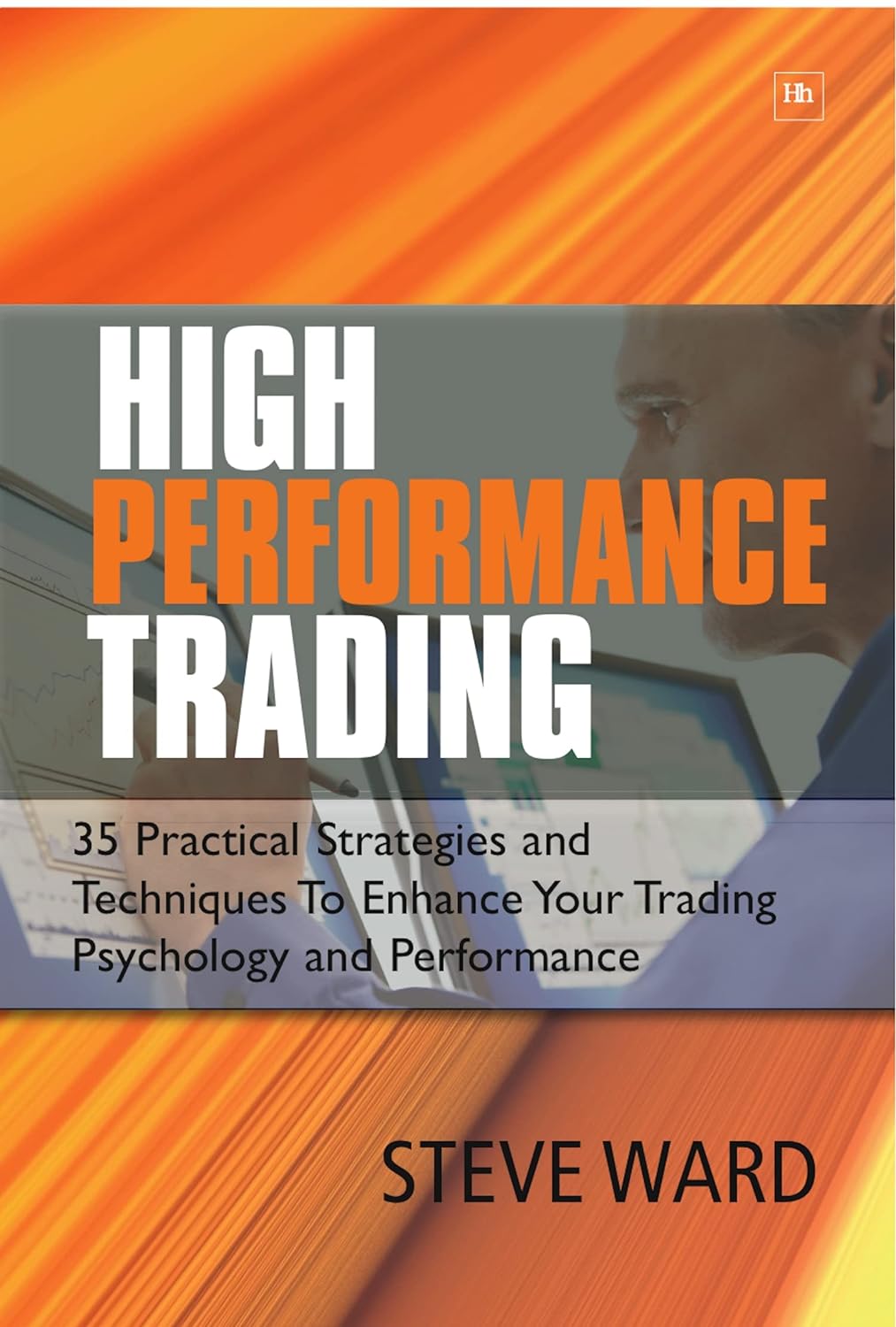 In this review, we will explore key themes and insights presented in the book, analyzing its effectiveness in guiding traders toward sustainable and high-performance outcomes.
In this review, we will explore key themes and insights presented in the book, analyzing its effectiveness in guiding traders toward sustainable and high-performance outcomes.
Part 1: The Psychological Foundation of Trading
Ward's book begins by establishing a strong foundation in understanding the psychological aspects of trading. Unlike many other trading guides that focus solely on market dynamics and technical indicators, High-Performance Trading delves deeply into the trader's mind, acknowledging the pivotal role emotions play in decision-making. The author argues that achieving consistent success in trading requires not only a comprehensive understanding of market mechanics but also a keen awareness of one's own psychological tendencies.
Ward introduces the concept of "mind fitness" — the mental resilience necessary to navigate the challenges of the financial markets. He explores common psychological pitfalls that traders encounter, such as fear, greed, and overconfidence. By presenting real-life case studies and practical exercises, Ward encourages readers to reflect on their own emotional responses to market events and develop strategies for overcoming destructive behaviors.
Part 2: Building a Robust Trading Plan
The book then transitions into the practical aspects of trading, emphasizing the importance of a well-defined and customized trading plan. Ward argues that a trading plan serves as the backbone of a trader's success, providing a structured framework for decision-making and risk management. High-Performance Trading provides a step-by-step guide to creating a comprehensive trading plan, covering aspects such as goal setting, risk tolerance assessment, and position sizing.
One notable strength of Ward's approach is his recognition of the uniqueness of individual traders. He stresses the need for traders to tailor their plans to align with their personal strengths, weaknesses, and risk appetites. This personalized approach is a refreshing departure from one-size-fits-all strategies promoted by some other trading literature. By guiding readers through the process of crafting a plan that suits their specific circumstances, Ward empowers them to take ownership of their trading journey.
Part 3: Risk Management Strategies
Risk management is a central theme in High-Performance Trading, and Ward rightly positions it as a critical element in the success of any trader. The book provides a comprehensive overview of various risk management techniques, from setting stop-loss orders to diversification strategies. Ward advocates for a dynamic approach to risk management, emphasizing the need for continuous assessment and adjustment of risk parameters as market conditions evolve.
The author's practical insights into risk management are complemented by real-world examples, illustrating the potential consequences of inadequate risk control. By showcasing the impact of risk mismanagement on actual trades, Ward effectively communicates the significance of this aspect of trading. Novice and experienced traders alike will find the emphasis on risk management a valuable reminder of the fragility of capital in the dynamic world of financial markets.
Part 4: The Discipline of Execution
Execution is where the rubber meets the road in trading, and Ward dedicates a substantial portion of the book to the discipline required for effective implementation of trading plans. High-Performance Trading underscores the importance of developing a structured routine and cultivating the discipline to adhere to it consistently. The author contends that successful traders are distinguished not only by their strategies but, more importantly, by their ability to execute those strategies with precision and consistency.
Ward introduces the concept of "trading in the zone," drawing parallels with the psychological state of flow experienced by athletes and artists. He argues that achieving a state of flow in trading requires a delicate balance between focus and relaxation. The book offers practical exercises and techniques to help traders enhance their mental clarity and concentration during trading hours.
Part 5: Continuous Improvement and Adaptation
One of the book's strengths lies in its recognition of trading as an evolving process. High-Performance Trading encourages traders to view setbacks as learning opportunities and emphasizes the importance of continuous improvement. Ward introduces the concept of "reflective practice," urging traders to regularly assess their performance, identify areas for improvement, and adapt their strategies accordingly.
The author provides a framework for ongoing self-assessment, including performance metrics and journaling techniques. By incorporating elements of performance coaching into the trading process, Ward equips readers with the tools to not only survive but thrive in the ever-changing landscape of financial markets.
Overall, High-Performance Trading by Steve Ward offers a holistic and insightful approach to trading that goes beyond the typical technical analyses found in many trading guides. Ward's emphasis on the psychological aspects of trading, combined with practical guidance on building a customized trading plan, effective risk management, disciplined execution, and continuous improvement, sets this book apart.
While some may find the absence of complex technical analysis and trading strategies a drawback, Ward's focus on the human element of trading fills a crucial gap in the literature. Traders at all levels, from beginners to seasoned professionals, will find High-Performance Trading a valuable resource for developing the mindset and skills necessary for sustained success in the financial markets. Ward's engaging writing style, supported by real-world examples and actionable advice, makes this book an essential addition to the library of anyone serious about mastering the art and science of trading.
Thanks for reading and if you have any suggestions on books you've liked, please share them below!

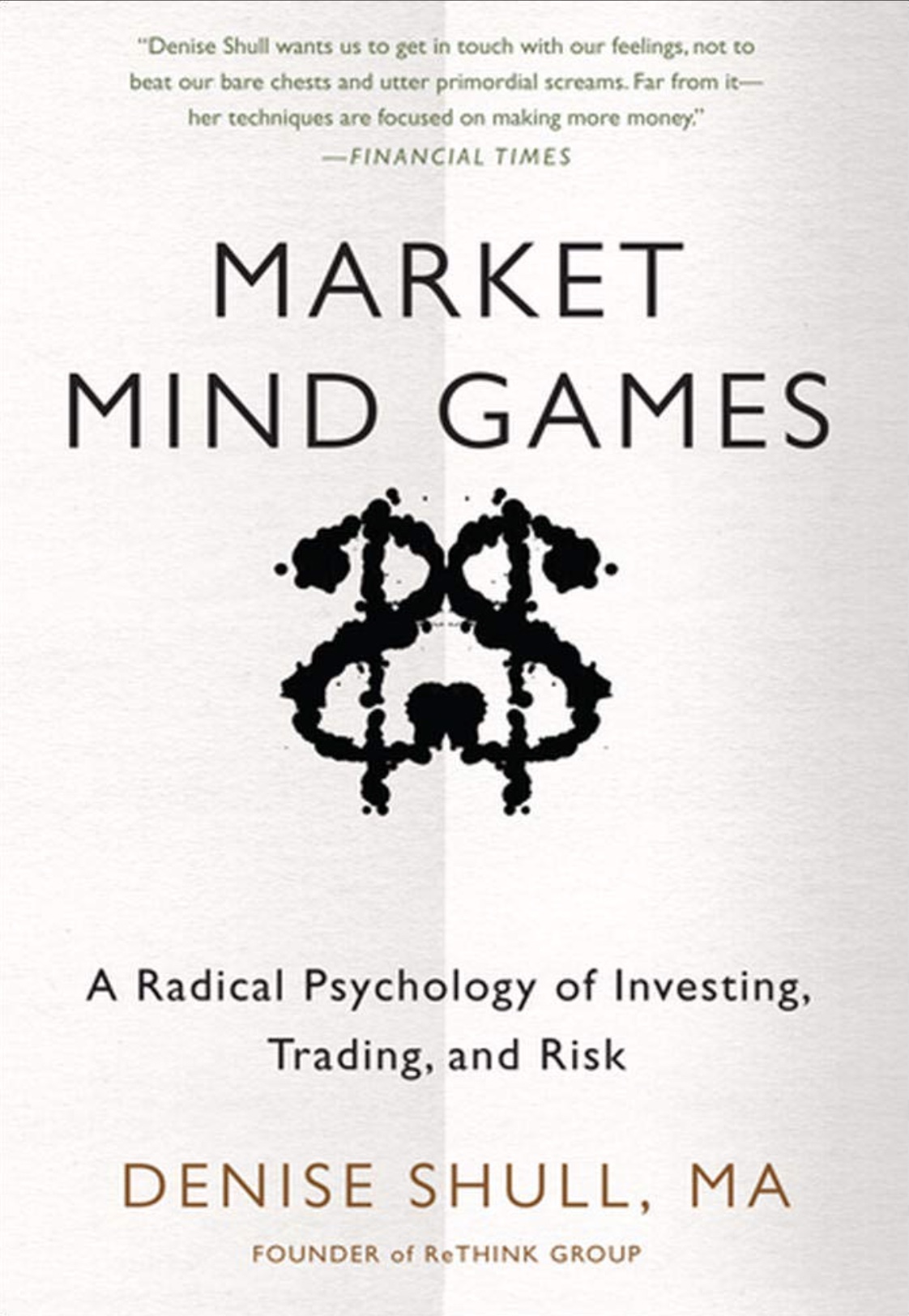
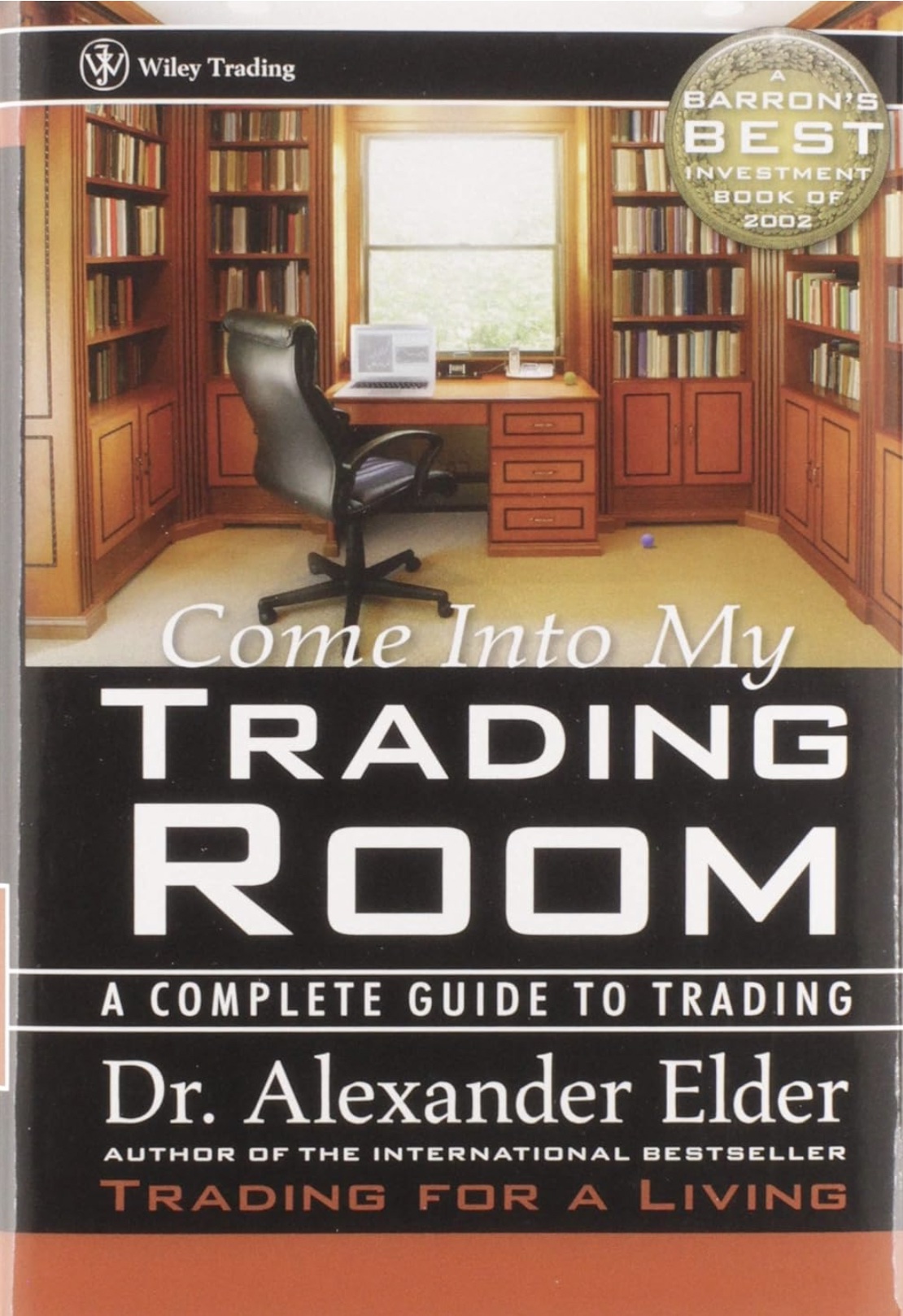
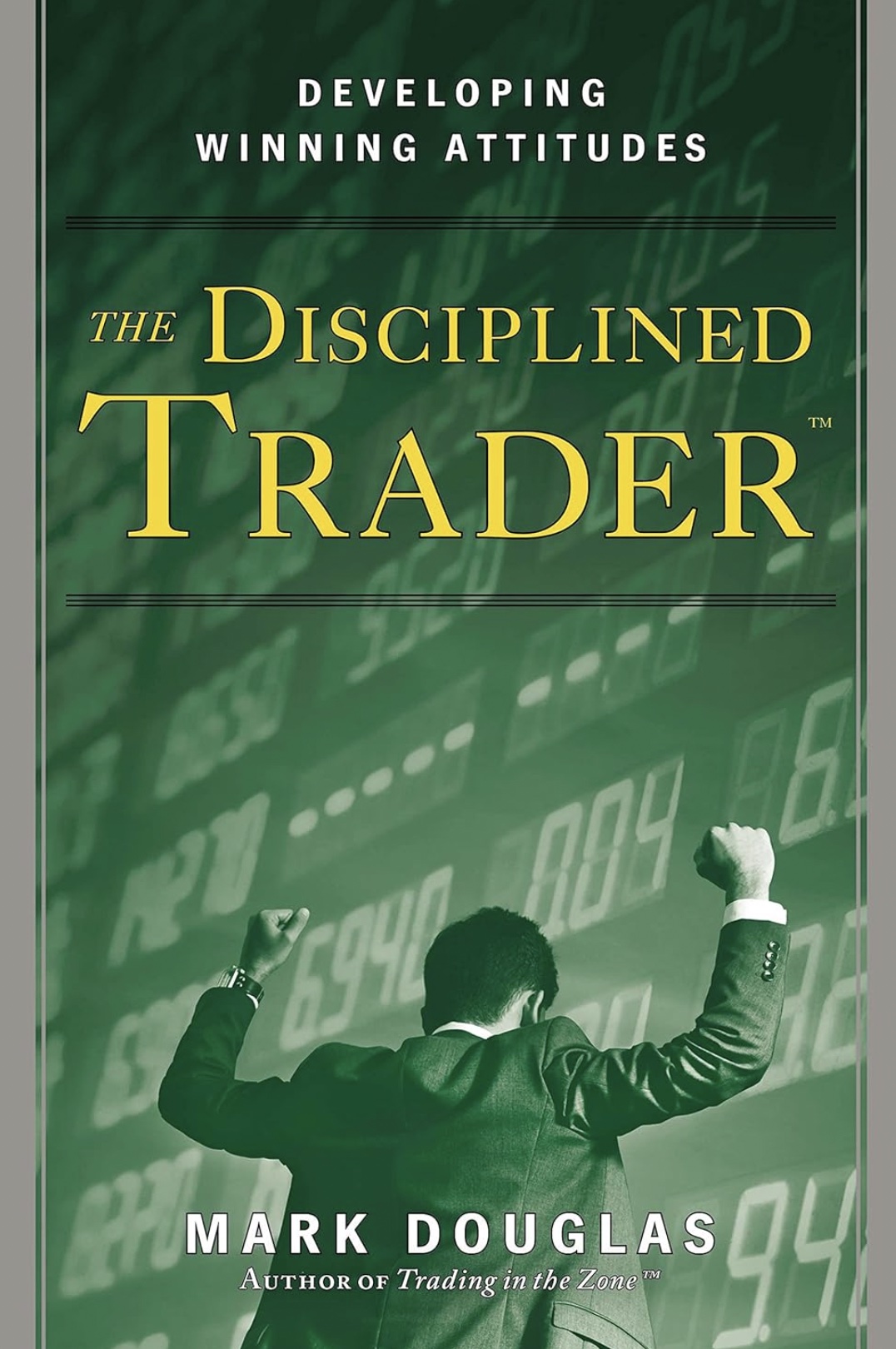
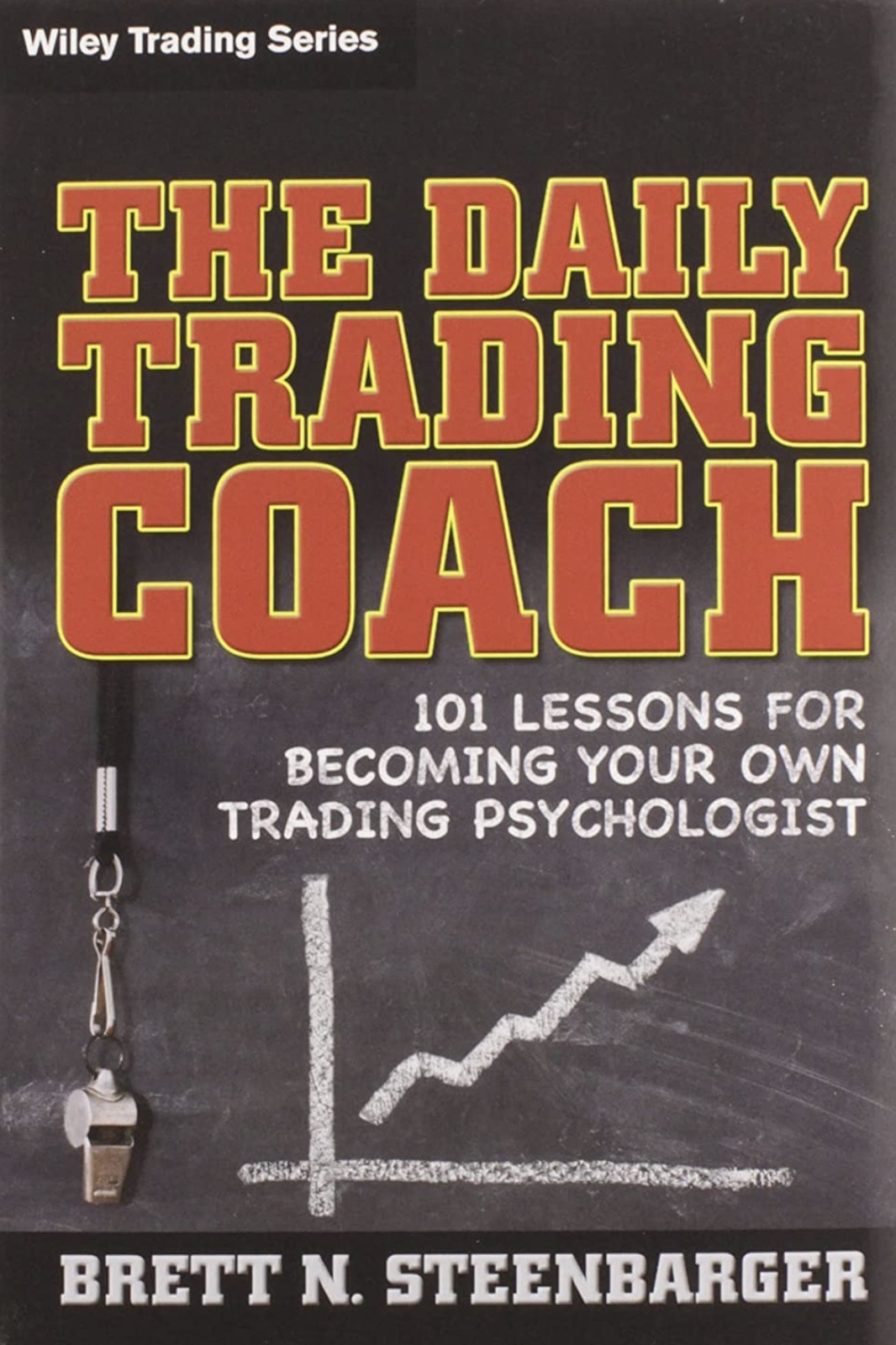
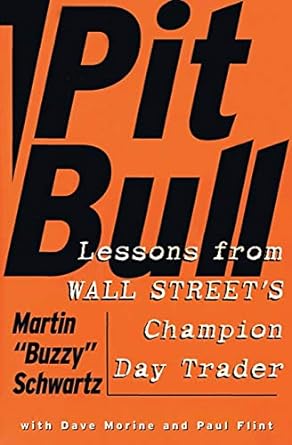
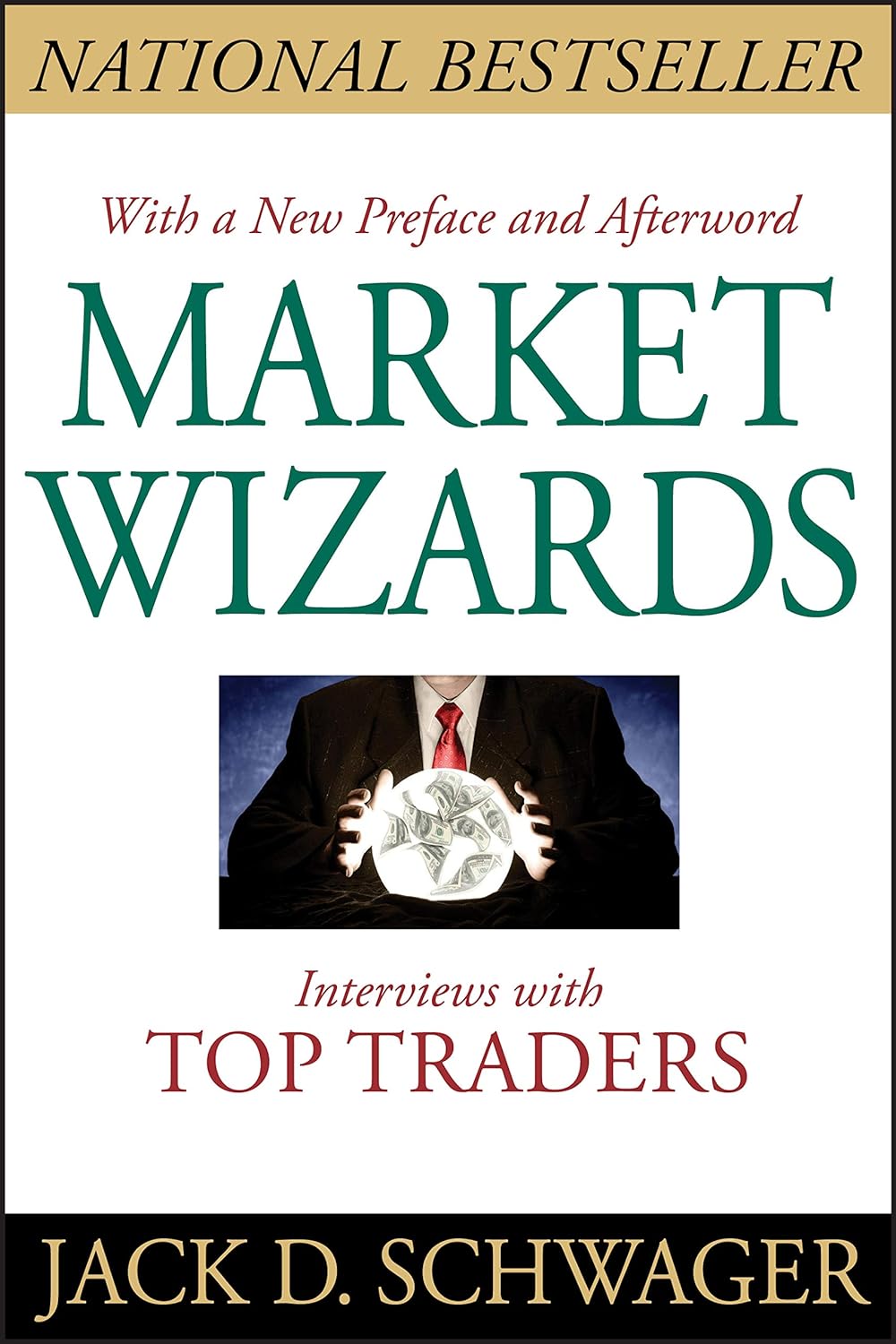

























0 Comments